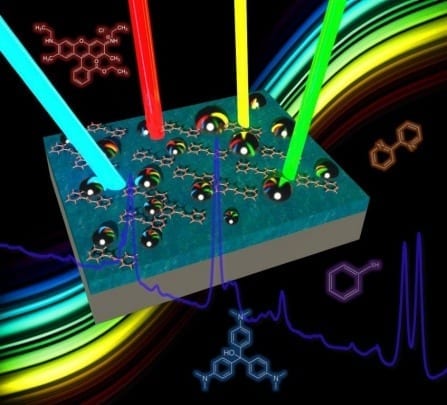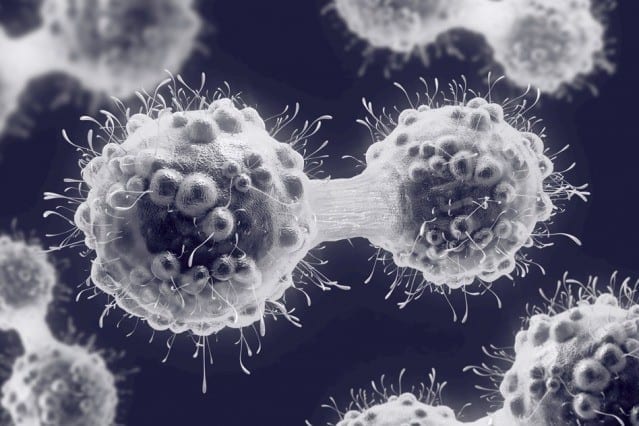
New sensing technology could improve our ability to detect diseases, fraudulent art, chemical weapons and more
From airport security detecting explosives to art historians authenticating paintings, society’s thirst for powerful sensors is growing.
Given that, few sensing techniques can match the buzz created by surface-enhanced Raman spectroscopy (SERS).
Discovered in the 1970s, SERS is a sensing technique prized for its ability to identify chemical and biological molecules in a wide range of fields. It has been commercialized, but not widely, because the materials required to perform the sensing are consumed upon use, relatively expensive and complicated to fabricate.
That may soon change.
An international research team led by University at Buffalo engineers has developed nanotechnology that promises to make SERS simpler and more affordable.
Described in a research paper published today in the journal Advanced Materials Interfaces, the photonics advancement aims to improve our ability to detect trace amounts of molecules in diseases, chemical warfare agents, fraudulent paintings, environmental contaminants and more.
“The technology we’re developing – a universal substrate for SERS – is a unique and, potentially, revolutionary feature. It allows us to rapidly identify and measure chemical and biological molecules using a broadband nanostructure that traps wide range of light,” said Qiaoqiang Gan, UB assistant professor of electrical engineering and the study’s
lead author.
The technology consists of a thin film of silver or aluminum that acts as a mirror, and a dielectric layer of silica or alumina. The dielectric separates the mirror with tiny metal nanoparticles
randomly spaced at the top of the substrate.
“It acts similar to a skeleton key. Instead of needing all these different substrates to measure Raman signals excited by different wavelengths, you’ll eventually need just one. Just like a skeleton key that opens many doors,” Zhang said.
“The applications of such a device are far-reaching,” said Kai Liu. “The ability to detect even smaller amounts of chemical and biological molecules could be helpful with biosensors that are used to detect cancer, Malaria, HIV and other illnesses.”
It could be useful identifying chemicals used in certain types of paint. This could be helpful detecting forged pieces of art as well as restoring aging pieces of art. Also, the technology could improve scientists’ ability to detect trace amounts of toxins in the air, water or other spaces that are causes for health concerns. And it could aid in the detection of chemical weapons.
The Latest on: Sensing technology
[google_news title=”” keyword=”Sensing technology” num_posts=”10″ blurb_length=”0″ show_thumb=”left”]
via Google News
The Latest on: Sensing technology
- MassDEP Investing in Air Quality Sensors in Environmental Justice Communitieson April 28, 2024 at 5:34 am
To celebrate Earth Week, the Healey-Driscoll Administration will dedicate $775,000 to install new air quality sensors across the state and put advanced monitoring technology ...
- Optical barcodes expand range of high-resolution sensoron April 26, 2024 at 11:27 am
The same geometric quirk that lets visitors murmur messages around the circular dome of the whispering gallery at St. Paul's Cathedral in London or across St. Louis Union Station's whispering arch ...
- From Mud Bricks to Smart Concrete: A Brief History of Building Materials Technologyon April 26, 2024 at 5:34 am
From mixing lime with water to self-sensing concrete, building materials technology has come a long way—and so have building standards.
- Smart Grids, Safe Lands: Reducing Wildfire Risks With Technologyon April 25, 2024 at 3:48 pm
Smart-connected sensors, real-time data and machine learning can provide the insights utilities need to continually improve their wildfire planning and make faster decisions ...
- Cities are ending their ShotSpotter contracts, but the sensors themselves are stayingon April 25, 2024 at 2:34 pm
Chicago and Mobile, Alabama, are cutting ties with ShotSpotter, the controversial gunshot detection company — but the sensors that notify police about shootings probably aren’t going anywhere, ...
- NIST researchers develop magnetics-based analyte sensoron April 25, 2024 at 8:45 am
Sensing platform uses magnetized hydrogels and a smartphone’s magnetometer to measure glucose concentration in test samples ...
- Lidar: Another emerging technology brought to you by Chinaon April 25, 2024 at 6:00 am
More must be done to safeguard U.S. data and prevent dependence on geopolitical adversaries for a critical, emerging technology.
- Creating quantum sensors - chemistry meets physicson April 24, 2024 at 5:00 pm
Ben King didn’t set out to create a long-sought after material to be used in quantum sensing devices, but life, like quantum science, can be weird. King, a professor in chemistry at the University of ...
- New sensing checks for 3D printed products could overhaul manufacturing sectoron April 23, 2024 at 10:26 am
A sensing technology that can assess the quality of components in fields such as aerospace could transform UK industry.
- Laser-based sensor promises breakthrough in 3D printingon April 23, 2024 at 5:49 am
New laser-based sensing technology has been revealed and could change the quality assessment of critical metallic components ...
via Bing News










